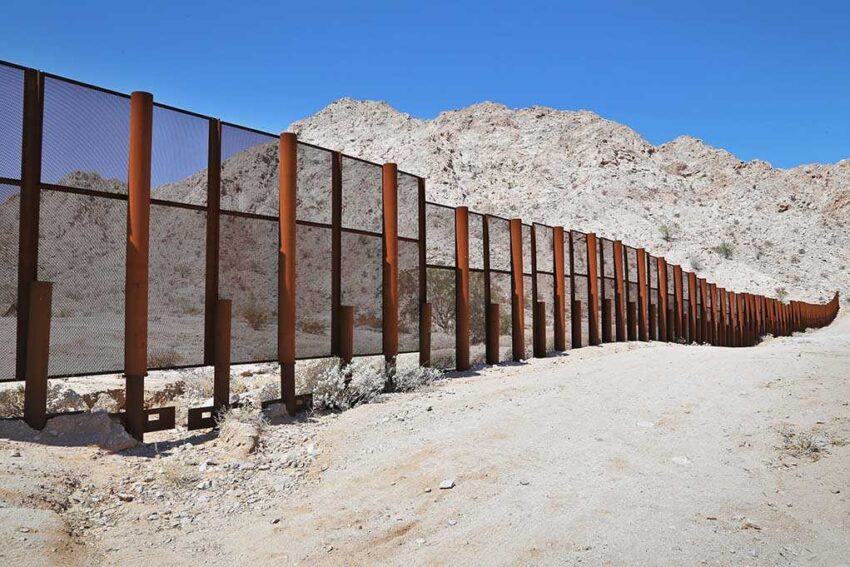The southern U.S. border has undergone significant changes in 2025, marked by a drastic reduction in migrant encounters and a shift in policies under the new administration.
At a Glance
- Encounters at the southern border have dropped to historic lows, with March 2025 seeing only 11,017 encounters, down from 189,359 in March 2024[1].
- The Trump administration has introduced new policies aimed at enhancing border security, including the construction of physical barriers and increased deterrence measures[4].
- Legislative efforts, such as the 2025 Reconciliation Bill, include funding for state-level immigration enforcement and border security initiatives[2].
Policy Shifts and Their Impact
The Trump administration’s executive orders have significantly reshaped U.S. border security policies. On January 20, 2025, President Trump signed orders aimed at securing the borders through multiple means, including the establishment of physical barriers and the detention of aliens suspected of violating federal or state laws[4]. These measures reflect a broader strategy to deter and prevent illegal crossings. The steep decline in border encounters is a direct result of these policy changes, which began with the Biden administration’s actions in the summer of 2024 and continued under the current administration[1]. The shift in strategy has also involved increased collaboration with state and local law enforcement agencies to enhance operational control at and beyond the border[3].
Legislative Support for Border Security
The 2025 Reconciliation Bill includes significant funding provisions for border security. The House Rules Committee approved an amendment adding $12 billion for states supporting border-related enforcement, while the Senate bill allocates $10 billion for a State Border Security Reinforcement Fund and $3.5 billion for reimbursements to state and local governments[2]. These funds are expected to support large-scale state immigration enforcement efforts, such as Texas’s Operation Lone Star. However, there have been challenges in passing these provisions due to concerns over their compliance with federal statutes. The Parliamentarian ruled that certain provisions violated reconciliation rules, necessitating clarifications to ensure conformity with existing laws[2].
Operational Enhancements by CBP
Customs and Border Protection (CBP) has focused on two primary areas of operational control: at entry and at large. At-entry apprehensions have decreased significantly, with CBP reporting a 93% drop from April 2024 to April 2025[3]. This success is attributed to sustained deterrence and enforcement efforts, which have reduced attempted crossings. CBP is also partnering with other federal agencies, such as ICE, to enhance enforcement beyond the border[3]. An example of this collaborative approach is Operational Tidal Wave, a large-scale enforcement initiative in Florida that resulted in the arrest of over 1,100 criminal noncitizens. This operation highlights the effectiveness of interagency collaboration in addressing public safety threats[3].
Conclusion
The changes at the southern U.S. border in 2025 reflect a concerted effort by the new administration and legislative bodies to enhance border security. While these policies have led to a significant reduction in migrant encounters, they also underscore the ongoing challenges in balancing enforcement with humanitarian concerns.
Sources:
Trump’s 2025 Executive Orders: Reshaping Security on the Southern Border
What’s in the 2025 Reconciliation Bill So Far?
Click this link for the original source of this article.
Author: Editor
This content is courtesy of, and owned and copyrighted by, https://www.rightwing.org and its author. This content is made available by use of the public RSS feed offered by the host site and is used for educational purposes only. If you are the author or represent the host site and would like this content removed now and in the future, please contact USSANews.com using the email address in the Contact page found in the website menu.








